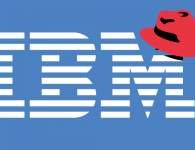
We kicked off our IT Symposium XPO 2019 here in Orlando today with a keynote that introduced the concept of TechQuilibrium. TechQuilibrium is what Gartner defines as the ideal mix of traditional and digital for your enterprise. It certainly is an exciting time to be involved with IT and how changes our businesses, our livelihood, even our very lives.
What I found most interesting during the key note was the prominent position data and analytics took. In fact, just to call this out, the whole key note was topped and tailed by prominent D&A research topics.
Decision making and the challenges business and IT leaders have with taking decisions was brought up almost from the get-go. Too much information; to little. The lack of trust in data; data being siloed and hard to find or get at. Gut feel and emotion over practical data-driven insights. In fact, the topic was front and center in last weekend’s Wall Street Journal. See “ ‘Feel the Force’: Gut Instinct, Not Data, Is the Thing”
So, what is the answer? Think more careful about how decisions are defined; think of the anatomy of a decision and use Gartner Decision intelligence model to break the puzzle down into bite-size chunks you can identify, evaluate, and invest in as needed. See Decision Intelligence Is the Near Future of Decision Making: A Gartner Trend Insight Report.
The GDI (as we call it now!) provides a means to avoid technology hype, most associated today with ML and AI, and determine where (if at all) you need to change behavior, culture, skills, data, or technology like AI. AI won’t automate every decision, nor will it automate all aspects of a decision. Use the GDI to get smart about modern decision management.
Toward the end of the keynote we called out another key foundation of D&A – one that has a bad time of it over many years: information governance, or as we now call it, data and analytics governance. The actual work of D&A governance is today very different to what consultants and practitioners peddled for many years. We no longer need to interview everyone; we no longer need to build a great big program with executive support the old way. We no longer need to concern ourselves with all data being equal (since it isn’t).
Modern D&A governance is first adaptive, offering a range of methods that encompass the compliance and risk mitigation practices of the past related to data security, data privacy and data retention; updated with a more outcome-based approach connecting data quality, ethics and more. Finally, the use of ML and AI to help with highly autonomous and self-defining D&A governance as and when this is possible and desirable.
The modern D&A governance program is not your mom and dad’s D&A governance program, nor is it your last managers or VP or boss. It is very, very different. Here is a webinar exploring some of the newer best practices: Effective Data and Analytics Governance – Finally! and here is a note exploring the must-have foundations of modern D&A governance. D&A governance is not about governing data for data’ sake; D&A governance is not even about data. It is about helping achieve business outcomes by governing the least amount of data, with the least amount of effort, to drive the biggest business impact.
We don’t see many organizations yet doing all these best practices in the same place at the same time. And some of these are hard to grasp or even adopt as culture is such a hard thing to rethink. But the opportunities are boundless, and the practices have worked. So, there is little holding you back. Let’s set up a 1-1 and talk about decision making and information governance! And watch out for a new renaissance in D&A governance in the next year.
Additional Resources
View Free, Relevant Gartner Research
Gartner’s research helps you cut through the complexity and deliver the knowledge you need to make the right decisions quickly, and with confidence.
Category: data-and-analytics-governance decision-intelligence decision-making techquilibrium
read more at https://blogs.gartner.com/digital-marketing by Andrew White
Cio







